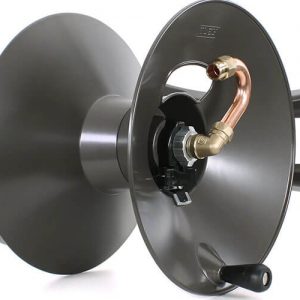A retractable hose reel plays a significant role in retracting a hose for use or wounding it back after use, keeping it safe and in good condition. Giraffetools retractable hose reel has some of the best hose reel types and models under one roof. Retractable reels have unique qualities and features such as good quality springs and locking mechanisms to stop the hose from rolling back. For these reasons, they are more expensive than other reels but are worth buying. We expound on the hose retracting methods down below.
Ways of Retracting a Hose
Different types of hose reels have varying ways of wounding the hose. There are three main ways; power motor rewind, spring rewind, and manual crank. Each method has characteristics that make it different from the other.
1. Powered Motor Rewind
The process needs power to take place successfully. It is suitable for use on all applications as long as power energy is provided. However, jobs that deal with intensive rolling and unrolling of the hose benefit more from this method as it is used mainly for long and large hoses that cannot be wound manually. It is not fully automated; thereby, the operator needs to put in some work to rewind the hose reel. Power shortage will lead to time wastage and low productivity, especially for big businesses or organizations, but a manual reel can be used as a backup.
2. Automatic Spring Retractable
This method is also referred to as spring rewind. The hose reel contains a spring filled with tension when the hose is pulled to the desired size and secured by a latch. After using the hose like in gardening, the latch is released by a short tug, and the tension built on the spring forces the hose to retract back to the hose reel.
Unlike the power motor rewind, this process doesn’t need much effort; therefore, the hose reel can be positioned anywhere like walls, ceilings, or ground provided its purpose is accomplished. It is ideal for hoses with short lengths since the maximum that can fit in the reel is 30 meters by 25mm. Applications requiring the hose to be wound and unwound at high speed also benefit from this method.
3. Rewinding Using a Manual Crank
The process involves the manual turning of a handle connected to the drum to retract the hose. The primary advantage of this method is it accommodates up to 60meters of hose length; however, rewinding it can be a challenge because too much energy is needed. Of all hose retracting ways, it’s the most tiring but the most economical. Only a few parts move; hence minimal damage occurs. It is suitable for use in a place with no power, and reels using this method are cheaper than the others. It is time-consuming, and only a little work is done.
Final Words
Retractable hose reels wound hoses differently. It’s up to you to choose your preferred one based on the price, effort needed in rewinding the reel, length of hose that can be accommodated, and other factors that must be considered before buying. All three retracting ways have merits and demerits; select what you are comfortable with to perform your tasks.
